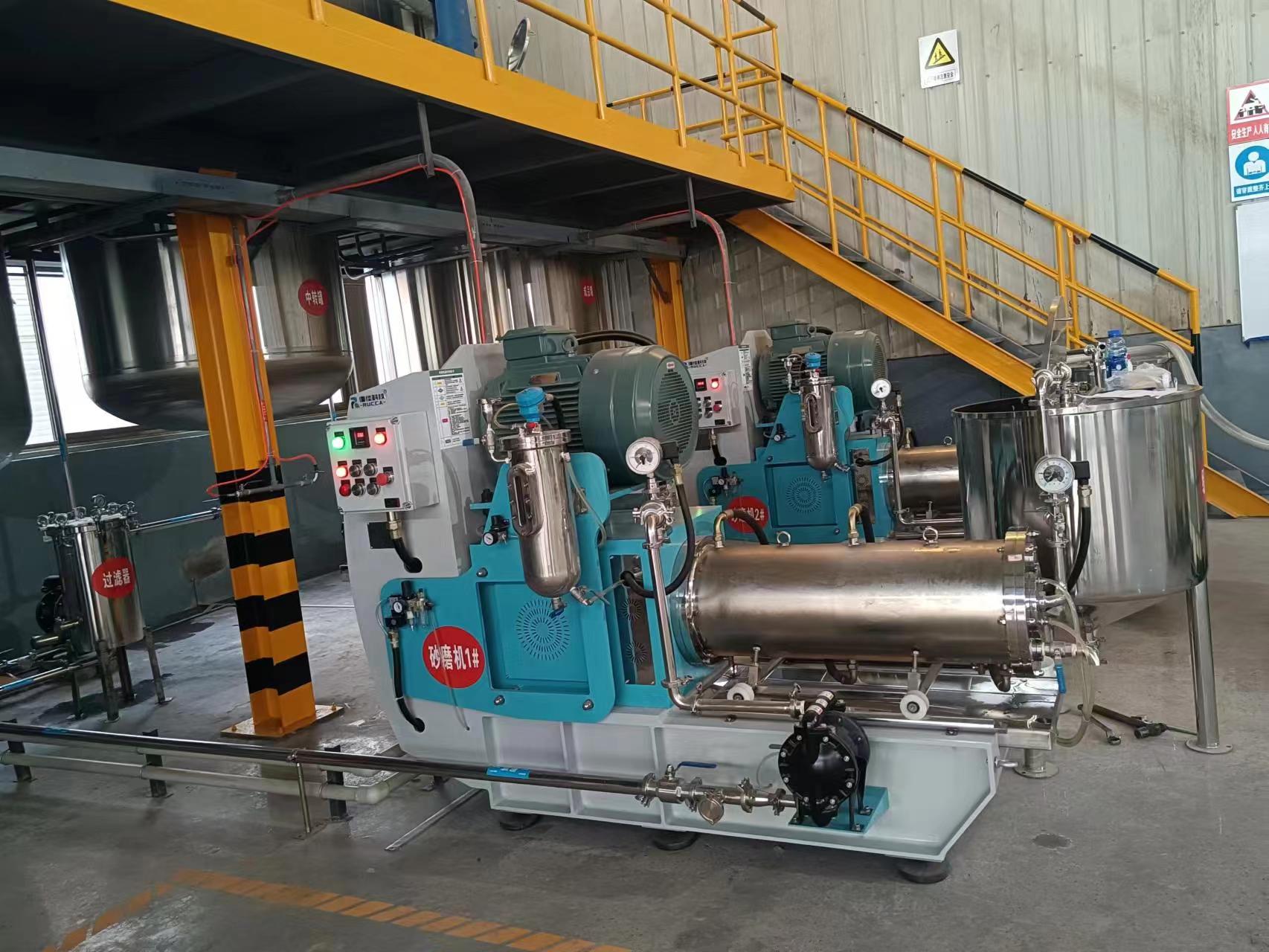Cleaning of ink bead mill equipment
Cleaning of ink bead mill equipment
In the printing and coating industry, ink bead mill as a key production equipment, its stable performance and efficiency directly affect the quality of the product and production costs. However, with the prolongation of the production cycle, the ink bead mill will often accumulate a large number of residues and impurities, which will not only reduce the beading effect, but also may cause wear and tear on the equipment, and even affect the final quality of the product. Therefore, regular and effective cleaning and maintenance of ink bead mill equipment has become an important link to ensure the smooth progress of production. In this article, we will discuss the cleaning method of the ink bead mill equipment, from the principle, steps to the precautions, all-round analysis of how to efficiently and safely complete this task.

I. Overview of the cleaning principle
The cleaning principle of ink bead mill is mainly based on the combination of physical and chemical action. Physical cleaning through high-pressure water flow, airflow or mechanical friction, etc., directly flushing away the adhesion of the surface of the equipment; while the chemical cleaning is the use of specific components in the cleaning agent, and the chemical reaction of the residue, so that it decomposes, dissolves or becomes easy to remove. In practice, it is often necessary to use a combination of both to achieve the best cleaning results.
II. Preparation before cleaning
1. stopping power: before carrying out any cleaning work, you must first ensure that the ink bead mill has been completely shut down, and cut off all the power supply to prevent electric shock accidents. 2. Empty the material: the bead mill ink, grinding media and other materials completely empty, to avoid pollution or damage in the cleaning process. 3. Select cleaning agent: according to the type of ink, equipment materials and the characteristics of the residue, select the appropriate cleaning agent. Ideal cleaning agent should be able to efficiently decompose the residue, while no corrosion on the equipment material. 4. Prepare tools: Prepare high-pressure water gun, brush, rag, protective clothing, gloves, goggles and other cleaning tools and protective equipment.
III. Cleaning steps
1. Preliminary cleaning
Use a high-pressure water gun on the outside of the bead mill and removable parts of the initial rinse, remove the surface of the floating dust and loose dirt. Pay attention to control the water pressure to avoid impact damage to the equipment.
2. Deep cleaning
- Chemical immersion: For stubborn residues that are difficult to remove by physical means, the equipment can be partially or completely immersed in a diluted cleaning agent. According to the instructions of the cleaning agent, set the appropriate soaking time and temperature. - Mechanical agitation: During the soaking process, the reaction between the cleaning agent and the residue can be accelerated by mechanical agitation to improve the cleaning efficiency. - Brushing and scraping: For stubborn lumps or adhesions, brushes or scrapers can be used to brush or scrape away, paying attention to moderate strength to avoid scratching the surface of the equipment.
3. Rinsing and drying
After cleaning, rinse the equipment thoroughly with clean water to ensure that all detergent residue is rinsed away. Afterwards, use a clean rag or hot air gun to dry or blow dry the surface and interior of the equipment to prevent rust or corrosion.
IV. Precautions
- Safety first: in the entire cleaning process, must strictly comply with safety regulations, wear protective gear to ensure personal safety.
- Environmental awareness: choose environmentally friendly cleaning agents to reduce pollution of the environment. Cleaning wastewater should be treated in accordance with environmental requirements, and should not be discharged at will.
- Equipment protection: In the cleaning process, pay attention to the protection of precision parts and wearing parts of the equipment to avoid unnecessary damage.
- Regular maintenance: cleaning is not only a means to solve current problems, but also an important measure to prevent future problems. Therefore, a regular cleaning and maintenance system should be established to ensure that the equipment is in good condition for a long time.
V. Summary
Cleaning of ink bead mill equipment is a complex and detailed work, which is directly related to the operating efficiency of the equipment and product quality. By mastering the correct cleaning principle, making sufficient preparations, following the scientific cleaning steps and paying attention to related matters, we can efficiently and safely complete this task, providing strong protection for the production activities of enterprises. At the same time, with the continuous progress of technology and environmental protection requirements are increasing, the future of the ink mill cleaning method will also be towards a more efficient, environmentally friendly, intelligent direction.




